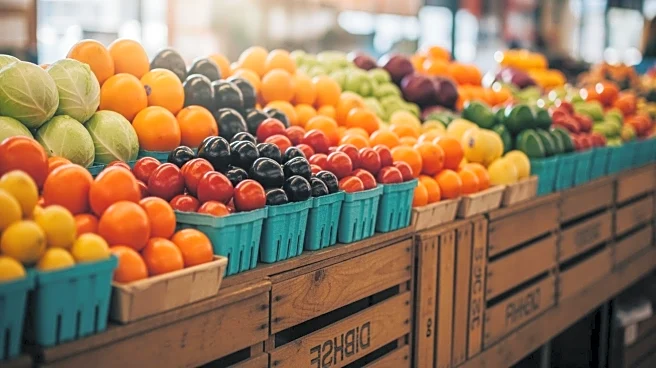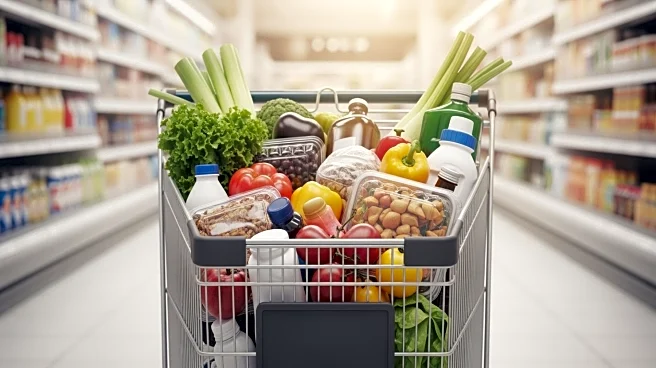What's Happening?
A recent analysis by WalletHub reveals that residents of Detroit are spending the largest share of their income on groceries compared to other U.S. cities, with nearly 3.8% of their income going towards food. This is significantly higher than in cities like
Fremont, California, where residents spend less than 1% of their income on groceries. The study highlights that cities with lower median household incomes, such as Detroit and Cleveland, are more affected by high grocery prices. The analysis was based on a survey of 26 common grocery items, including meat, dairy, and produce. The report indicates that grocery prices have increased by nearly 30% since before the COVID pandemic, with a notable rise of 0.6% between July and August.
Why It's Important?
The rising cost of groceries is a significant concern for residents in lower-income cities like Detroit and Cleveland, where even modest grocery bills consume a larger portion of limited paychecks. This situation exacerbates financial stress for these communities, as they struggle to manage their budgets amidst inflation and supply constraints. In contrast, residents in higher-income cities can better absorb these costs. The disparity in grocery spending highlights broader economic inequalities and the impact of inflation on different regions. As grocery prices stabilize at elevated levels, consumers are advised to adopt budgeting strategies and seek discounts to manage expenses.
What's Next?
To cope with the increased grocery costs, experts recommend that consumers rely on budgeting, discounts, and smart buying practices. Strategies include sticking to a shopping list, joining store loyalty programs, buying generic products, and comparing unit prices. Additionally, buying in bulk, shopping seasonally, and seeking deals on 'ugly' produce can help reduce expenses. These measures are crucial for residents in affected cities to mitigate the financial impact of rising grocery prices.
Beyond the Headlines
The ongoing rise in grocery prices underscores the need for broader economic policies that address income disparities and inflation. It also highlights the importance of supporting local farmers and sustainable food practices to ensure food security. As consumers adapt to these changes, there may be a shift towards more sustainable and cost-effective shopping habits, which could have long-term benefits for both the economy and the environment.















